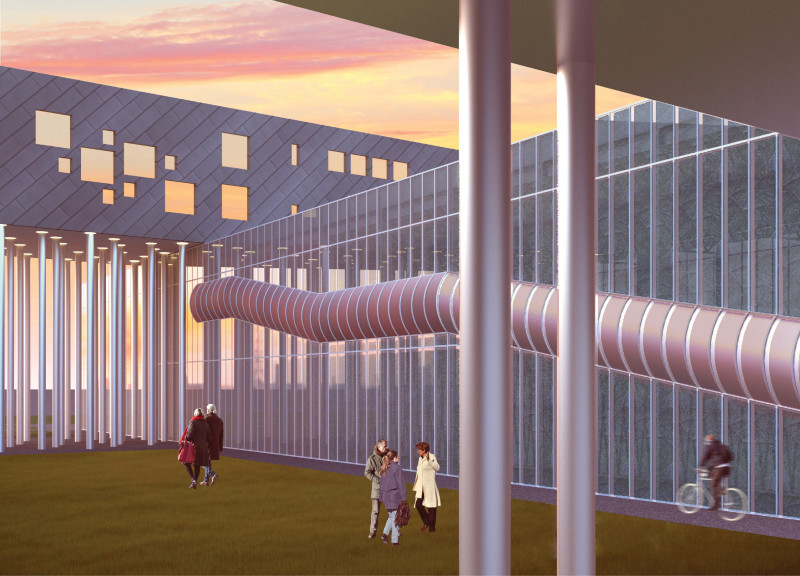5 key facts about this project
At its core, this architectural design emphasizes [describe main function, e.g., residential living, community space, educational facility], illustrating an understanding of contemporary lifestyle requirements. The provision of open spaces is skillfully balanced with private areas, ensuring that interactions among users can take place naturally, fostering a sense of community while respecting individual privacy needs. The layout is meticulously organized, with flowing spaces that promote functionality. Areas such as [mention key spaces, e.g., living areas, classrooms, or communal spaces] are strategically placed to enhance accessibility and movement, while also maintaining a connection to the exterior environment through [describe any large windows, terraces, or gardens that allow for interior-exterior flow].
Materiality plays a significant role in this project, with a careful selection that reflects both aesthetics and sustainability. The primary materials utilized include [list all materials mentioned, e.g., reinforced concrete, timber cladding, glass, metal], each chosen for their durability and ability to contribute to the overall design narrative. Reinforced concrete supports the structural integrity while offering a modern appearance, while timber cladding introduces warmth and texture, breaking the coldness often associated with concrete. Large expanses of glass facilitate natural lighting, blurring the lines between indoor and outdoor spaces, enhancing the occupants' experience of their environment.
The design incorporates several innovative approaches that set it apart. For instance, the orientation of the building maximizes solar gain, optimizing energy efficiency throughout the year. Further sustainability efforts are evident in the inclusion of [mention specific systems like rainwater harvesting, photovoltaic panels, green roofs], demonstrating a commitment to reducing the ecological footprint. Such features not only showcase a deep respect for nature but also aim to inspire users towards a more sustainable way of living.
Special attention has been given to the landscaping of the surroundings. Native plants have been integrated into the design, aiding in biodiversity and reducing water consumption while harmonizing the structure with its natural context. Pedestrian pathways are thoughtfully designed to encourage walking and cycling, promoting healthier lifestyle choices among users.
This architectural project stands out not just for its thoughtful design and functionality but also for how it embodies a philosophy of integrating human needs with environmental stewardship. The unique combination of modernism and sustainability reflects a growing trend in architecture that seeks to create spaces which are not only livable but also responsible to the planet.
For those interested in exploring this project further, the architectural plans, sections, and designs reveal even more intricate details regarding the conceived spatial relationships and thought processes within the design. Understanding the architectural ideas behind this project can provide a deeper appreciation for how innovative approaches can effectively meet contemporary needs while remaining grounded in sustainable practice. Readers are encouraged to delve into this project’s presentation for a comprehensive look at its merits and underlying concepts.


 Christina Valentinova Tantcheva
Christina Valentinova Tantcheva 




















